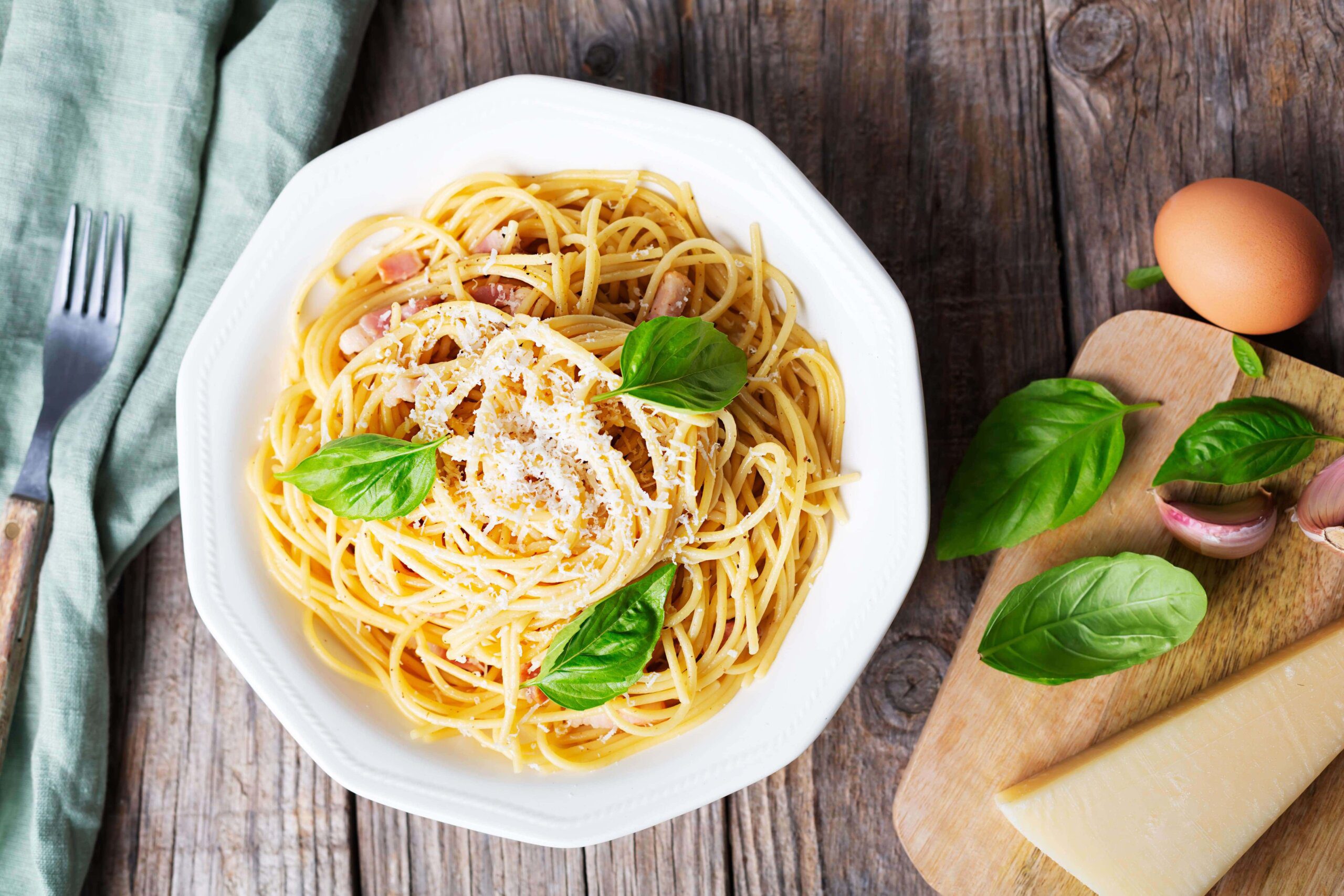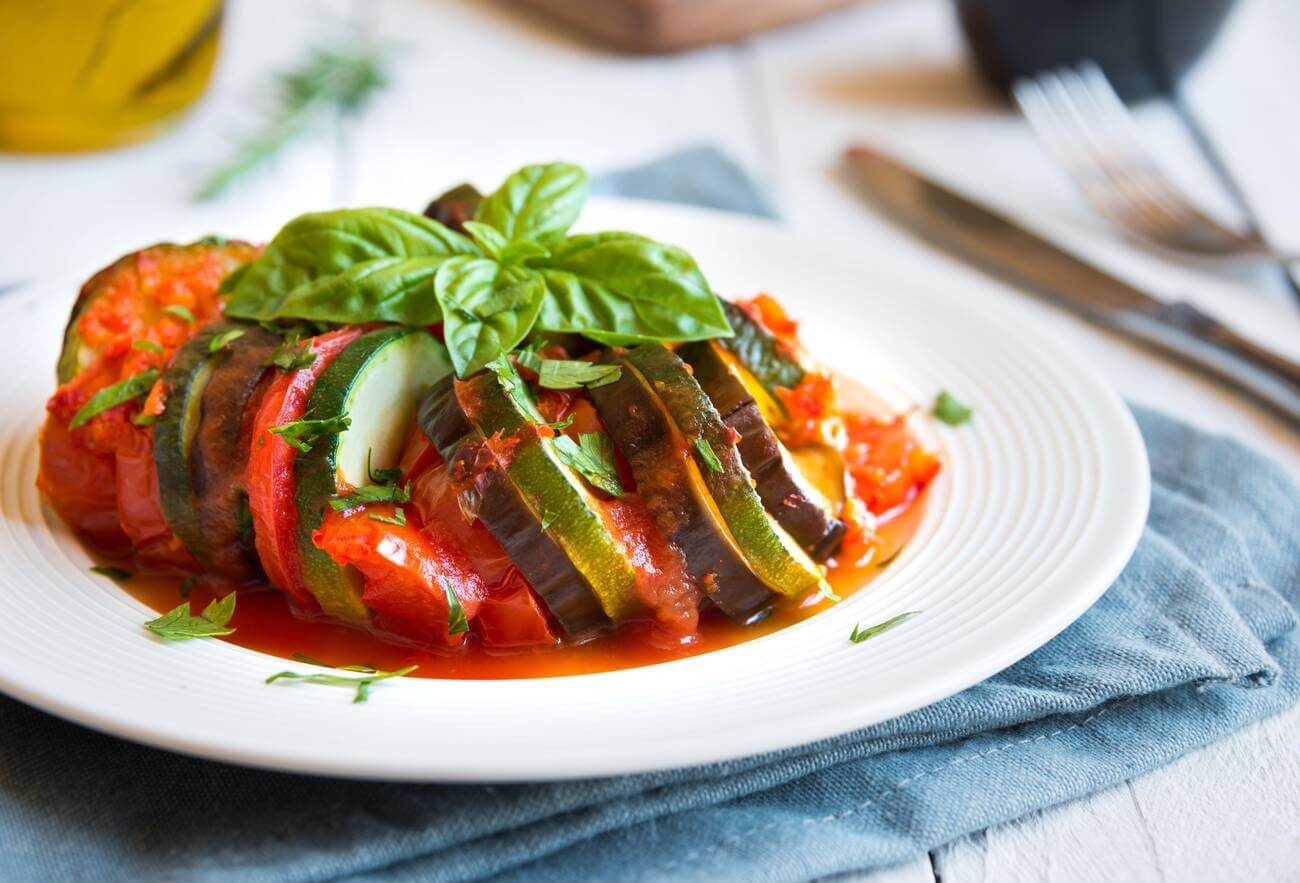If you’re a pasta aficionado, you’re probably no stranger to the allure of Italian cuisine. And when it comes to Italian pasta dishes, few can resist the temptation of a perfectly crafted Carbonara or a hearty Pasta Alla Gricia. These two Roman classics have not only conquered the hearts and taste buds of Romans but have also taken the culinary world by storm. But the real question is, which one deserves the coveted title of the ultimate Roman pasta champion? Let’s dive into the saucy world of Carbonara and the rustic charm of Pasta Alla Gricia to settle this gastronomic showdown.
The Origins: Rome, Pasta, and Legends
Carbonara’s Mysterious Past
Picture this: it’s World War II, and American soldiers are stationed in Rome. Amid the turmoil of war, they introduced the locals to the wonders of bacon and eggs. Inspired by this unlikely culinary exchange, the Italians put their unique spin on it, blending the newfound ingredients with local treasures like guanciale (cured pork jowl), pecorino Romano cheese, and a generous pinch of black pepper. And voilà! Carbonara was born—or so the legend goes.
But hold on a minute; some culinary historians insist that Carbonara’s roots run deeper than the 20th century. They argue that references to a similar dish called “spaghetti alla carbonara” can be traced back to the 1800s. Whatever the true origin, one thing’s for sure: Carbonara has firmly cemented itself in the heart of Roman cuisine.
Pasta Alla Gricia: A Shepherd’s Tale
Now, let’s rewind the clock even further to the 17th century. We’re in the rugged, mountainous region of Lazio, home to the “grici,” the legendary pork-curing shepherds. These resourceful folks whipped up Pasta Alla Gricia as a humble dish, using the basics—pasta, guanciale, pecorino Romano cheese, and a dash of black pepper. It was a meal fit for shepherds, simple yet hearty. Little did they know, it would become a rustic masterpiece celebrated not only in Lazio but around the world.
Battle of the Ingredients
Carbonara’s All-Star Cast
Pasta: Carbonara typically struts its stuff with long pasta like spaghetti, fettuccine, or rigatoni. The pasta is the canvas for this masterpiece, cooked to a perfect al dente.
Guanciale: Enter the show-stealer, guanciale. It’s like bacon’s more sophisticated Italian cousin. Sliced or diced, it’s rendered until crispy, infusing the dish with a rich, smoky flavor.
Eggs: The eggs are the magic behind Carbonara’s creamy allure. Whisked together with pecorino Romano cheese and black pepper, they create that luxurious sauce we all crave.
Pecorino Romano Cheese: This cheese is the salty, tangy powerhouse that elevates Carbonara’s flavor. Grated and mixed with eggs, it adds a kick to the creamy sauce.
Black Pepper: Freshly ground black pepper isn’t just a condiment here; it’s an essential player. It brings the heat and spiciness that dances on your taste buds.
Pasta Alla Gricia’s Rustic Lineup
Pasta: Just like Carbonara, Pasta Alla Gricia calls for long pasta—spaghetti, fettuccine, or rigatoni. Al dente, always.
Guanciale: The star of the show, once again. Guanciale’s role here is to shine by crisping up and releasing its savory goodness.
Pecorino Romano Cheese: Grated and sprinkled generously, this cheese adds that signature salty tang that defines Roman pasta dishes.
Black Pepper: The trusty black pepper is back, adding its spicy zing to complement the richness of guanciale and cheese.
The Culinary Clash
Carbonara: Creamy Elegance
- Cook the Pasta: Get that pasta into a boiling pot of salty water. Cook it just right—firm to the bite. Remember, it’ll keep cooking in the sauce.
- Render the Guanciale: In a sizzling skillet, let the guanciale work its magic. It’ll crisp up and fill your kitchen with its tantalizing aroma.
- Create the Sauce: In a mixing bowl, whisk eggs, grated pecorino Romano cheese, and a generous helping of freshly ground black pepper. That’s your sauce.
- Toss and Serve: Drain the pasta and toss it into the skillet with the crispy guanciale. Pour in the creamy sauce and let the magic happen. If it’s too thick, a dash of reserved pasta cooking water will save the day. Serve immediately, garnished with more pecorino Romano cheese and black pepper.
Pasta Alla Gricia: Rustic Simplicity
- Cook the Pasta: Boil up that pasta until it’s al dente perfection, just like with Carbonara.
- Guanciale’s Grand Entrance: Render the guanciale, let it sing its crispy tune in the skillet, and dance with the pasta later.
- The Cheese and Pepper Affair: Sprinkle generous amounts of pecorino Romano cheese and black pepper onto the pasta in the skillet. Mix it all up for that rustic, savory coating.
- Serve with Gusto: Pasta Alla Gricia is best served hot, with flavors mingling gloriously. Top it off with more pecorino Romano cheese and black pepper for an extra punch.
Taste Buds, Prepare for Battle!
Carbonara: Creamy Indulgence
Carbonara is the king of creamy elegance. Imagine each strand of perfectly al dente pasta lovingly coated in a creamy sauce that’s both savory and slightly tangy, thanks to the pecorino Romano cheese. The crispy guanciale delivers its smoky, salty punch, while the black pepper adds a spicy kick. It’s a flavor symphony—a harmonious balance of creamy, salty, and spicy notes.
Pasta Alla Gricia: Rustic Charm
Pasta Alla Gricia is the rustic hero of simplicity. Here, it’s all about the guanciale. The crispy, savory goodness of this cured pork takes center stage. Pecorino Romano cheese adds its salty tang, and black pepper brings the heat. It’s a dish that celebrates the straightforward pleasures of life, with guanciale stealing the spotlight.
Cultural Significance: Rome in a Plate
Carbonara: Roman Elegance
Carbonara is synonymous with the bustling streets of Rome. It’s an embodiment of Roman elegance and culinary finesse. This dish has made its way from the cobblestone alleys to international menus, representing the heart and soul of the Lazio region. Every plate of Carbonara is a celebration of Italian artistry and a nod to its rich history.
Pasta Alla Gricia: Shepherd’s Legacy
Pasta Alla Gricia, on the other hand, is a nod to the past—a tribute to the resourceful shepherds of Lazio. It’s a dish that tells the tale of simple, honest ingredients coming together to create something extraordinary. While it might not have the global fame of Carbonara, it’s a cherished symbol of Italian heritage
and a testament to the enduring connection between the Roman people and their culinary traditions. It’s like a hearty handshake from the past, reminding us of the time-honored simplicity of Roman cooking.
The Ultimate Showdown: Carbonara vs. Pasta Alla Gricia
So, we’ve walked through the history, ingredients, cooking methods, and flavors of Carbonara and Pasta Alla Gricia. But the question remains: which one reigns supreme in the battle of Roman pasta dishes?
Carbonara: A Symphony of Creaminess
Carbonara emerges as the champion of creamy indulgence. Its velvety sauce, a fusion of eggs, pecorino Romano cheese, and black pepper, creates a culinary masterpiece. The crispy guanciale adds depth and character, while the black pepper provides a tantalizing kick. Every bite is an exquisite journey through a symphony of flavors. Carbonara is a dish that celebrates Roman elegance and culinary finesse. It’s a timeless classic that’s both comforting and sophisticated—a true embodiment of the Eternal City.
Pasta Alla Gricia: Rustic Triumph
Pasta Alla Gricia, on the other hand, stands tall as the rustic triumph of Roman cuisine. It’s unapologetically simple, with the guanciale taking center stage. This dish is a celebration of the rugged charm of the Lazio region, where resourceful shepherds created something extraordinary from humble ingredients. The combination of guanciale, pecorino Romano cheese, and black pepper is pure magic, offering a burst of savory goodness with every forkful. Pasta Alla Gricia is a reminder of the rich history and heritage that defines Roman cooking—an authentic taste of the past.
It’s All About Personal Preference
In the end, the choice between Carbonara and Pasta Alla Gricia comes down to personal preference. It’s like choosing between two beloved symphonies, one filled with creamy crescendos and the other with rustic melodies.
If you prefer a dish that celebrates sophistication and indulgence, Carbonara is your go-to. Its creamy sauce, crispy guanciale, and harmonious balance of flavors create a culinary experience that’s nothing short of enchanting.
But if you crave the honest, unpretentious charm of traditional Italian cuisine, Pasta Alla Gricia is your ticket to gastronomic bliss. It’s a dish that proudly wears its rustic roots and offers a flavorful journey through Roman history.
The Final Bite
In the world of Roman pasta, Carbonara and Pasta Alla Gricia are shining stars, each with its own unique appeal. Whether you find yourself savoring the creamy elegance of Carbonara or relishing the rustic triumph of Pasta Alla Gricia, one thing’s for certain: both dishes are a celebration of Roman culinary heritage.
So, why choose between the two? Embrace the diversity of Roman cuisine and savor them both. Explore the creamy depths of Carbonara and the savory simplicity of Pasta Alla Gricia. It’s a culinary adventure that will transport you to the heart of Rome, one delicious bite at a time.
Remember, the key to perfection in either dish lies in using high-quality ingredients and mastering the art of timing. Cook the pasta to al dente perfection, render the guanciale until it’s irresistibly crispy, and whisk that creamy Carbonara sauce with finesse. Or let the guanciale’s smoky allure infuse every strand of pasta in Pasta Alla Gricia. Whichever path you choose, you’re in for a Roman feast like no other.
In conclusion, Carbonara and Pasta Alla Gricia are not rivals but partners in a symphony of flavors that define Roman cuisine. So, why not celebrate them both and experience the rich tapestry of tastes that Rome has to offer? Buon appetito!



